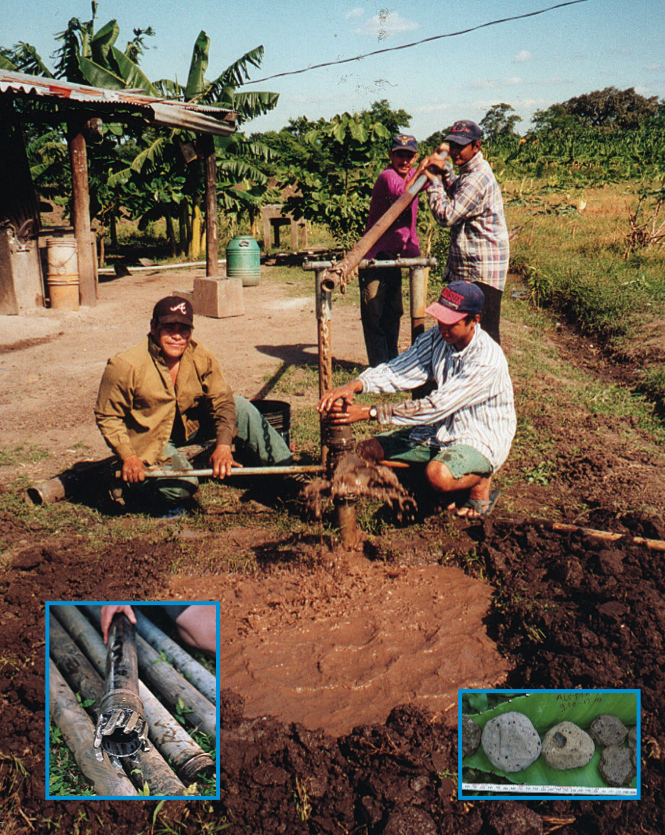Difference between revisions of "Groundwater - Rota sludge well drilling"
From Akvopedia
(→External links) |
|||
| Line 37: | Line 37: | ||
* [http://www.practicafoundation.nl www.practicafoundation.nl] | * [http://www.practicafoundation.nl www.practicafoundation.nl] | ||
* General info on well drilling [http://www.rwsn.org www.rwsn.org] | * General info on well drilling [http://www.rwsn.org www.rwsn.org] | ||
| − | * [http://nl.youtube.com/watch?v=MvebFHCjCvk] | + | * [http://nl.youtube.com/watch?v=MvebFHCjCvk nl.youtube.com/watch?v=MvebFHCjCvk ] |
Revision as of 13:04, 19 June 2008
The Rota-sludge method is an adaptation of the Indian hand sludge method. The hardened drill bit is turned 90 degrees during drilling thus chiselling the bottom of the hole. This technology can be used to drill 2-5 inch wells in layers with sand, clay, gravel, tuff stone or weathered rock.
| Advantages | Disadvantages |
|---|---|
| Drill in hard soil.
|
|
Capacity
2-5 inch wells to 20 meter.
Costs of wells
US$ 30 India. US$ 80-400 Nicaragua.
Applying conditions
Cost of introduction: Variable US$ 5,000-20,000 per project, including hand-on training, drill set and drilling of test wells.
Movie
External links
- www.practicafoundation.nl
- General info on well drilling www.rwsn.org
- nl.youtube.com/watch?v=MvebFHCjCvk

